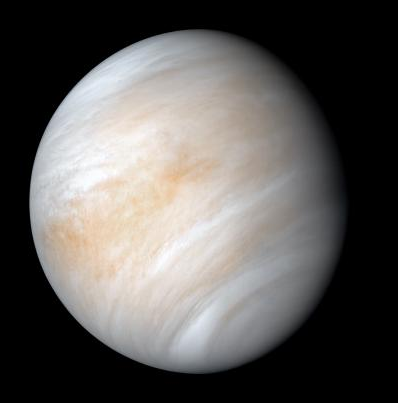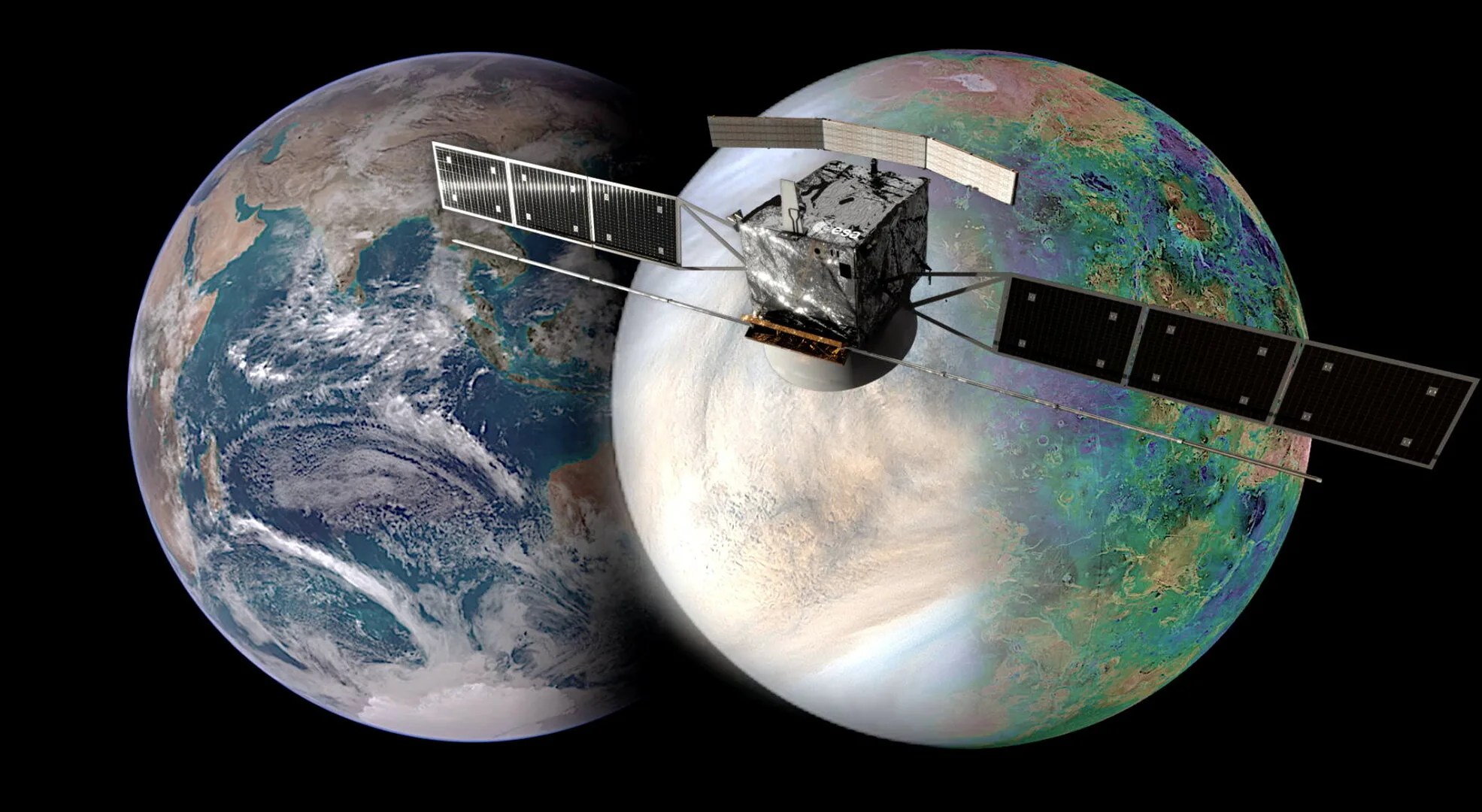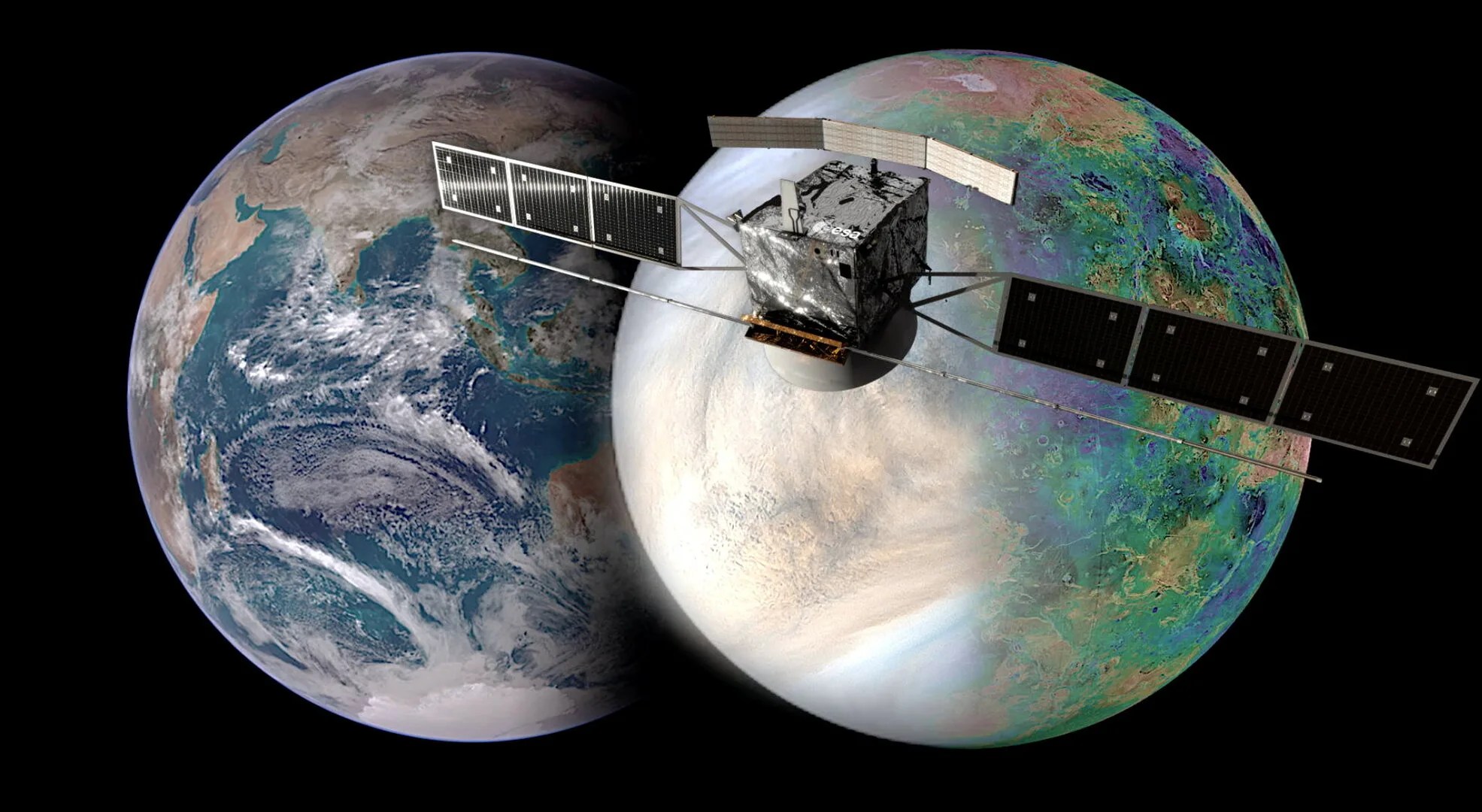


Venus: Exploration
Dozens of spacecraft have launched to explore Venus, but not all have been successful. NASA's Mariner 2 was the first spacecraft to visit any planet beyond Earth when it flew past Venus on Dec. 14, 1962. NASA is planning two new missions to Venus: VERITAS, and DAVINCI.
PLANET Location
Inner Solar System
FIRST NASA MISSION
Mariner 2
TOTAL MISSIONS
40+
FUTURE NASA MISSIONS
2
Why Return to Venus?
How did Venus become a sulfurous inferno, while Earth evolved to become the only known world with life?
Although not currently habitable, Venus lies within the Sun’s "Goldilocks zone," and may have been habitable before Earth. Exploring the surface of Venus is difficult because of the intense heat and crushing air pressure.
Read More
VERITAS
Venus Emissivity, Radio science, InSAR, Topography, And Spectroscopy
VERITAS, together with NASA’s planned DAVINCI mission, represents the first U.S.-led exploration of Venus since Magellan three decades ago. VERITAS will conduct science investigations from a low, circular orbit around Venus. It will collect high-resolution, global maps of the hellish surface hidden beneath the clouds.
Read More
DAVINCI
Deep Atmosphere Venus Investigation of Noble gases, Chemistry, and Imaging
DAVINCI will study Venus from its clouds down to the planet's surface – the first mission to study Venus using both flybys and a descent probe.
Read More
EnVision
ESA's Cosmic Vision Program
ESA has selected EnVision to make detailed observations of Venus. As a key partner in the mission, NASA is providing the Synthetic Aperture Radar, called VenSAR, to make high-resolution measurements of the planet’s surface features.
Read More
Featured Missions to Venus
More than 40 missions have been launched to explore Venus.

Mariner 2
Mariner 2 became the first successful mission to another planet when it flew by Venus on Dec. 14, 1962.

Mariner 10
Mariner 10 was the first spacecraft to study Mercury; and the first to explore two planets (Mercury and Venus) in a single mission.

Pioneer Venus 1
Pioneer Venus 1 launched on May 20, 1978, and was the first U.S. spacecraft to orbit Venus.

Magellan
Magellan launched May 4, 1989, from the cargo bay of Space Shuttle Atlantis. It imaged the entire surface of Venus.

Venus Express
Venus Express launched Nov. 9, 2005, and was the first European spacecraft to orbit Venus.

DAVINCI
This future NASA mission will study Venus from near the top of the clouds to the planet’s surface.

VERITAS
VERITAS will be among the first NASA spacecraft to explore Earth’s sister planet Venus since the 1990s.

EnVision
EnVision is an ESA Venus orbiter set to launch in the 2030’s, to study the planet’s history, activity and climate.
All Missions to Venus
Launch Date | Spacecraft | Nation | Type | Outcome |
|---|---|---|---|---|
Feb. 4, 1961 | USSR | Impact | Failure | |
Feb. 12, 1961 | USSR | Impact | Failure | |
July 22, 1962 | USA | Flyby | Failure | |
Aug. 27, 1962 | USA | Flyby | Success-First | |
Sept. 1, 1962 | USSR | Lander | Failure | |
Sept. 12, 1962 | USSR | Flyby | Failure | |
Feb. 19, 1964 | Zond 3MV-1A No. 4A (also No. 2) | USSR | Flyby | Failure |
March 27, 1964 | Cosmos 27 (Venera) | USSR | Flyby/Hard-Lander Probe | Failure |
April 2, 1964 | USSR | Flyby/Lander | Failure | |
Nov. 12, 1965 | USSR | Flyby | Failure | |
Nov. 16, 1965 | USSR | Impact | Success-First | |
Nov. 23, 1965 | USSR | Lander | Failure | |
June 12, 1967 | USSR | Atmospheric Lander Probe | Success-First | |
June 14, 1967 | USA | Flyby | Success | |
June 17, 1967 | USSR | Lander | Failure | |
Jan. 5, 1969 | USSR | Descent Probe | Success | |
Jan. 10, 1969 | USSR | Descent Probe | Success | |
Aug. 17,1970 | USSR | Lander | Success-First | |
Aug. 22, 1970 | USSR | Lander | Failure | |
March 27, 1972 | USSR | Atmospheric Lander Probe | Success | |
March 31, 1972 | USSR | Lander | Failure | |
Nov. 3, 1973 | USA | Flyby | Success | |
June 8, 1975 | USSR | Orbiter/Lander | Success-First | |
June 14, 1975 | USSR | Orbiter/Lander | Success | |
May 20, 1978 | USA | Orbiter | Success | |
Aug. 8, 1978 | USA | Probes | Success | |
Sept. 9, 1978 | USSR | Flyby and Lander | Success | |
Sept. 14, 1978 | USSR | Flyby and Lander | Success | |
Oct. 30, 1981 | USSR | Flyby and Lander | Success | |
Nov. 4, 1981 | USSR | Flyby and Lander | Success | |
June 2, 1983 | USSR | Orbiter | Success | |
June 7, 1983 | USSR | Orbiter | Success | |
Dec. 15, 1984 | USSR | Lander/Balloon/Flyby | Success | |
Dec. 21, 1984 | USSR | Lander/Ballon/Flyby | Success | |
May 4, 1989 | USA | Orbiter | Success | |
Oct. 18, 1989 | USA | Flyby | Success | |
Oct. 15, 1997 | USA | Flyby (multiple) | Success | |
Nov. 9, 2005 | ESA | Orbiter | Success | |
May 20, 2010 | Japan | Orbiter | Success | |
May 20, 2010 | Japan | Flyby | Partial Success | |
May 20, 2010 | Japan | Flyby | Success | |
Oct. 3, 2018 | USA | 1st Venus Flyby | Success | |
Oct. 20, 2018 | ESA/JAXA | Flyby (multiple) | Success | |
Dec. 26, 2019 | USA | 2nd Venus Flyby | Success | |
July 11, 2020 | USA | 3rd Venus Flyby | Success | |
Feb. 20, 2021 | USA | 4th Venus Flyby | Success | |
Oct. 16, 2021 | USA | 5th Venus Flyby | Success | |
Aug. 21, 2023 | USA | 6th Venus Flyby | Success | |
Nov. 6, 2024 | USA | 7th and Final Venus Flyby | Success |
- Siddiqi, Asif A. Beyond Earth: A Chronicle of Deep Space Exploration, 1958-2016. NASA History Program Office, 2018.
- Parker Solar Probe Timeline
- NASA Space Science Data Coordinated Archive (NSSDCA)




